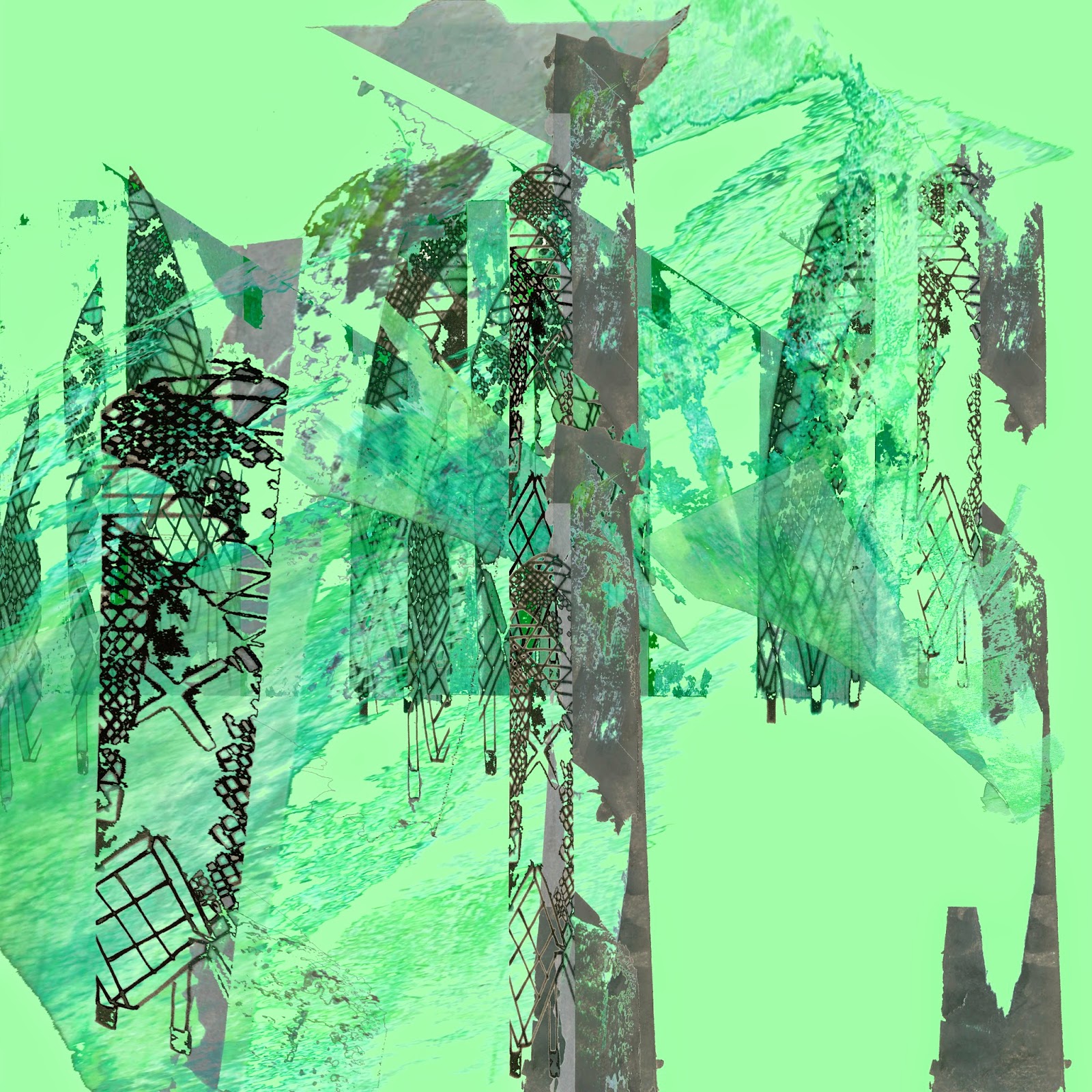Throughout the unit I have developed the way in which I think about sampling and research - I have found inspiration much more easily than in previous projects. This could be due to the fact that I considered a context for my work relatively quickly after the project begun; I created drawings in a way that I haven't tried before, or I have found ways to develop samples more easily than last year.
I have enjoyed learning new techniques and ways of working in the embroidery area, such as the Ethos Software and Multi-Head Stitch-Out, and Photoshop techniques. The Photoshop workshops, in particular, have allowed me to experiment with compositions to work out what would be most suitable for my project and context. I would like to use these new techniques in future projects as they have helped me to develop ideas into physical samples.
My work ethic throughout the project has allowed me to complete, as well as thoroughly explore the techniques I have used, although I have felt far more relaxed than in first year. The tutorial system of only having one meeting a week, I feel, has allowed me to work more freely and experiment and develop ideas more easily.
The initial concept underpinning my work was 'Disguise and Cover-Up' which influenced my project more literally nearer the beginning due to the media I used. The idea of 'Urban Influences' allowed me to explore structures as well as shape - I was inspired by the 'old and new' aspect of the architecture between the City Centre and Media City which contributed to the graphic quality throughout my work, as well as enabling me to explore structures and 3D compositions. Moving forward from my initial drawings, I concentrated more closely on the colours and compositions which have played a bigger part in the samples I worked on, rather than a concept itself.
Throughout visual research my main influences were Dario Moschetta, because of his abstract use of colour, and Issey Miyake for his structural garments. These have been main themes throughout my work and have enabled me to explore new pathways.
The context for my work is a mixture of Window Displays and Visual Merchandising, Costume and Set Design. I would say that this helped to portray a diluted concept as these could all be referenced as 'disguise' or 'cover-up'. The context influenced the way in which I planned samples due to the scale and colour use, as the context for my work would require large samples with bold colours.
The figurative drawings of buildings have become the graphic, dark lines within my samples, whereas the abstract drawings have made me consider my choice of colour more carefully. I have found this relatively easy to translate straight into embroidery using the Ethos Software, as well as experimenting with colour and thread compositions.
In future projects, I will be able to develop the techniques I have used, as well as having a closer awareness of colour and composition. I would have liked to experiment further using Photoshop alongside the Ethos Software to develop my technique and try out other compositions.
The initial concept underpinning my work was 'Disguise and Cover-Up' which influenced my project more literally nearer the beginning due to the media I used. The idea of 'Urban Influences' allowed me to explore structures as well as shape - I was inspired by the 'old and new' aspect of the architecture between the City Centre and Media City which contributed to the graphic quality throughout my work, as well as enabling me to explore structures and 3D compositions. Moving forward from my initial drawings, I concentrated more closely on the colours and compositions which have played a bigger part in the samples I worked on, rather than a concept itself.
The context for my work is a mixture of Window Displays and Visual Merchandising, Costume and Set Design. I would say that this helped to portray a diluted concept as these could all be referenced as 'disguise' or 'cover-up'. The context influenced the way in which I planned samples due to the scale and colour use, as the context for my work would require large samples with bold colours.
The above images have influenced my samples the most due to the element of structure and detail in them. I prefer the green colour palette, but the graphic qualities of the pink image.
My most successful sample was using the Multi-Head embroidery machine and incorporates graphic qualities and complimentary colours in a large scale that would be appropriate for my context. The fabric is suitable for draping as a backdrop, and the colours are bold enough to be seen from a distance which is an important factor in public displays.
In future projects, I will be able to develop the techniques I have used, as well as having a closer awareness of colour and composition. I would have liked to experiment further using Photoshop alongside the Ethos Software to develop my technique and try out other compositions.


















.jpg)
.jpg)
.jpg)
